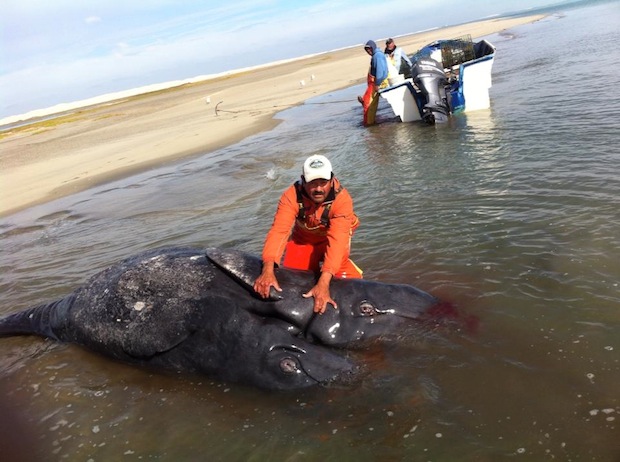This time of year in Southern California, we are treated to the annual whale migration as many species of whales head south to the Sea of Cortez to give birth to their calves. I was out a couple weeks ago on a fishing trip to Catalina Island and we saw two gray whales spouting and fluking on our way out to the fishing grounds.
Encountering these gentle giants is always exciting. Recently, Mexican scientists had a whale encounter they were completely unaccustomed to seeing. In this article from Pete Thomas Outdoors, you can see pictures and video of conjoined or “Siamese twin” whale calves.
Scientists in Mexico’s Laguna Ojo de Liebre, or Scammon’s Lagoon, on Sunday discovered conjoined gray whale calves.
It might be the first documented case of conjoined twin gray whales. (Conjoined twins have occurred in other species, such as fin, sei and minke whales. A database search at the Natural History Museum of Los Angeles County did not reveal published instances of conjoined gray whale twins, or what might also be referred to as Siamese gray whale twins.)
Unfortunately, the twins discovered in Scammon’s Lagoon did not survive. Most likely, they were miscarried because the carcass is only about seven feet long, versus the normal 12-16 feet for newborn gray whales.
Photos: Pete Thomas Outdoors



















![The Best Deer Camp Chili [VIDEO] Deer Chili Ingredients, Tomatoes, Chili Spices](/wp-content/uploads/2015/10/Deer-Chili-Deer-Camp-Recipe-218x150.jpg)
![How to Call Elk Early in the Season [VIDEO]](/wp-content/uploads/2016/08/byers003-218x150.jpg)







![Idiots Disturb Hunter: How Would You Have Handled It? [VIDEO]](/wp-content/uploads/2015/10/DSC00110-e1474487693878-100x70.jpg)
![Albino Buck Shocked to Shed His Antlers [VIDEO]](/wp-content/uploads/2015/10/AlbinoDeer-100x70.jpg)